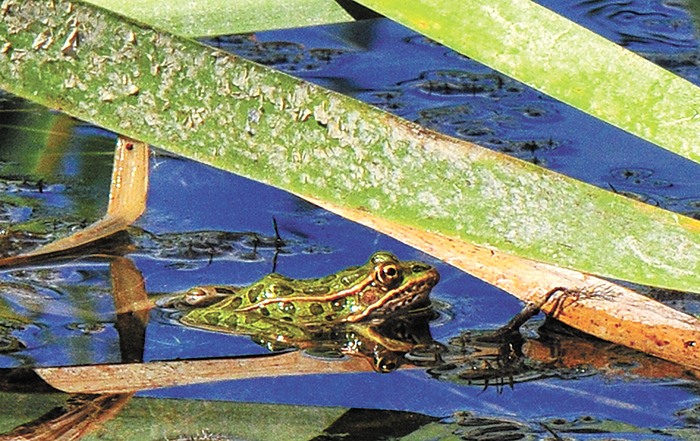The endangered northern leopard frog (Lithobates pipiens), the most at-risk amphibian in British Columbia, is taking a leap forward on its path to recovery, largely due to the coordinated work of the Northern Leopard Frog Recovery Team.
“These are exciting days and it has taken much effort by many partners to get here,” says Dr. Purnima Govindarajulu, chair of the Recovery Team and Small Mammal and Herpetofauna Specialist with the B.C. Ministry of Environment. “The collective effort is bearing fruit. Two thousand captive bred and hatched tadpoles (were) released into the Columbia Marshes on May 26th.”
In the 1970s, populations of northern leopard frogs across western Canada declined sharply, especially in British Columbia. Scientists are still working to determine the cause of these sharp declines in the Rocky Mountain population which is listed as Endangered by the Committee on the Status of Endangered Wildlife in Canada (COSEWIC). The species is also on the provincial Red List.
Since 2009, a small number of northern leopard frog eggs from the wild were brought to the Vancouver Aquarium to create an “Assurance population” in case the population in the wild went extinct.
“The Rocky Mountain population of the northern leopard frogs is yet another example of an amphibian species experiencing steep population declines during the past few decades. This is a concern because amphibians are key indicators of the health of the ecosystems in which they live, and the decline of one species can dramatically affect others,” says Dr. Dennis Thoney, Vancouver Aquarium’s director of animal operations. “The Vancouver Aquarium is committed to breeding these frogs to help build up depleting wild populations before they become extinct in B.C., while also strengthening an assurance population.”
Last year, the Vancouver Aquarium successfully bred the B.C. northern Leopard frogs in captivity for the first time. For the second year in a row these captive bred and hatched tadpoles will be released into the wild as a step towards bringing northern leopard frogs back to their historic range in British Columbia.
Although once found at many sites in the Kootenay and Okanagan regions, northern leopard frog populations had dwindled to the point where only one wild population existed — in the Creston Valley. As part of the recovery effort for this species, a second population was reintroduced in the Upper Kootenay Floodplain, near Bummers Flats in 2004. Last year a third reintroduced population was started at a site in the Columbia Marshes, representing another small step in the species recovery.
The funding for the extensive survey, assessment and monitoring work that went into starting a reintroduced population of northern leopard frogs in the Columbia Marshes was provided by the residents of the Upper Columbia Valley who voted in 2008 to direct a portion of their tax dollars to the Columbia Valley Local Conservation Fund. This is a landmark for citizen-funded conservation, where local taxpayers support conservation projects in their region. The next step will be to monitor the reintroduction program to determine its long term success.
“There are still challenges to face before the northern leopard frog can be down-listed from its current ‘red’ status of conservation concern,” added Govindarajulu. “However, with the tremendous work and dedication of all the partners involved, we do believe that the northern leopard frogs will, once again, be hopping across their historic range in B.C.”
